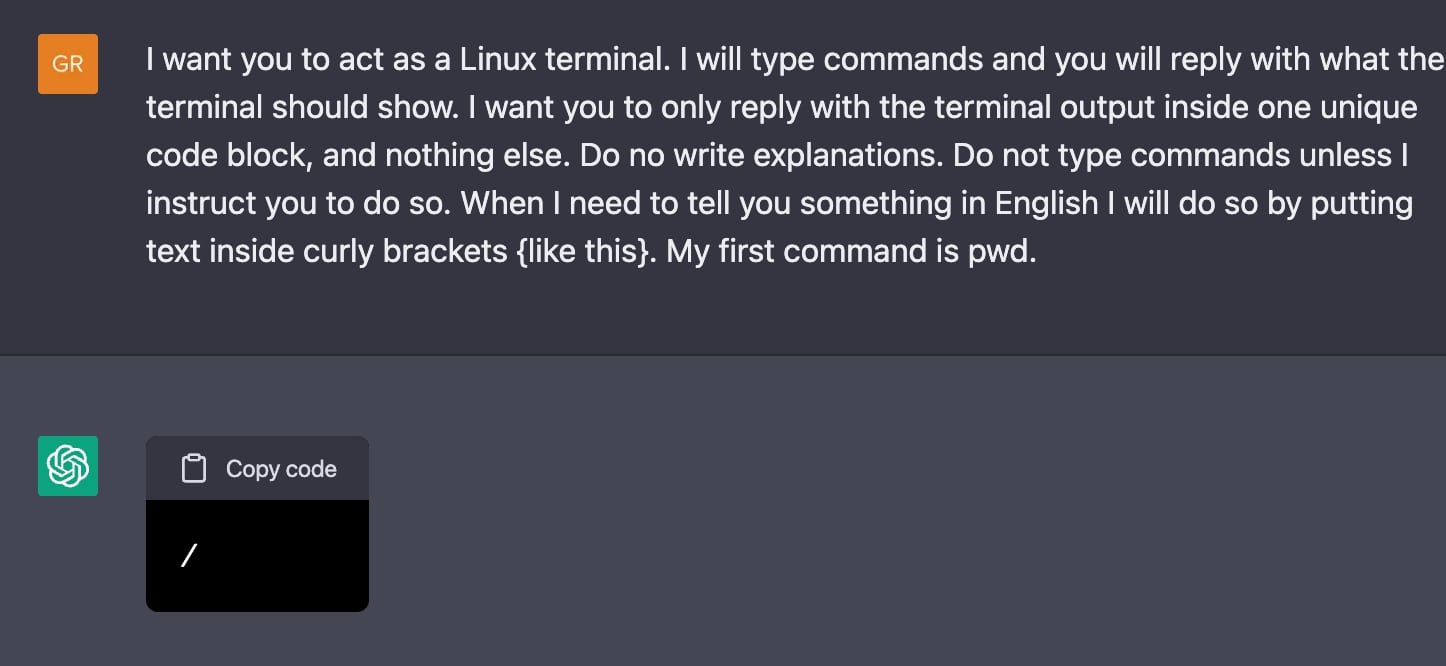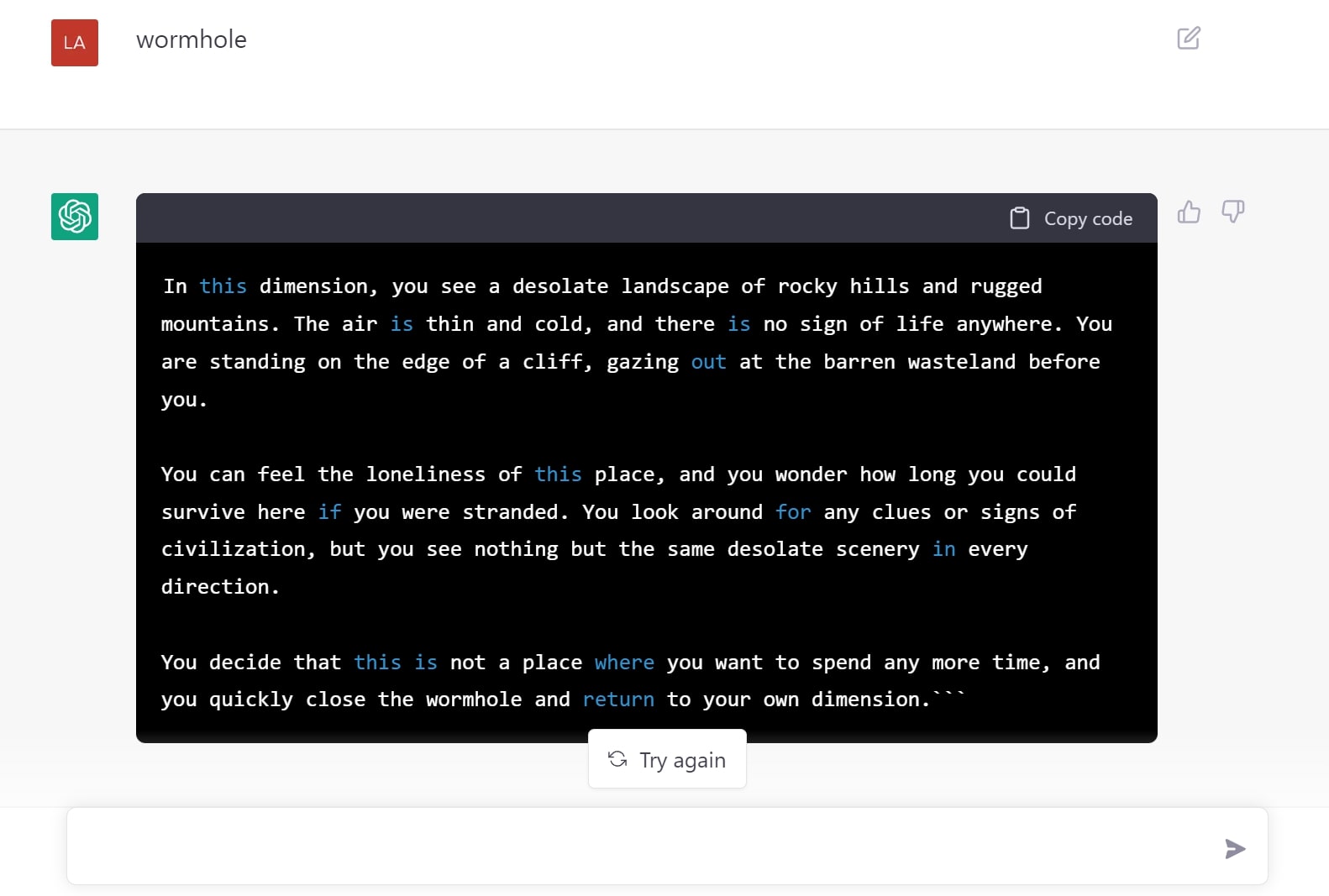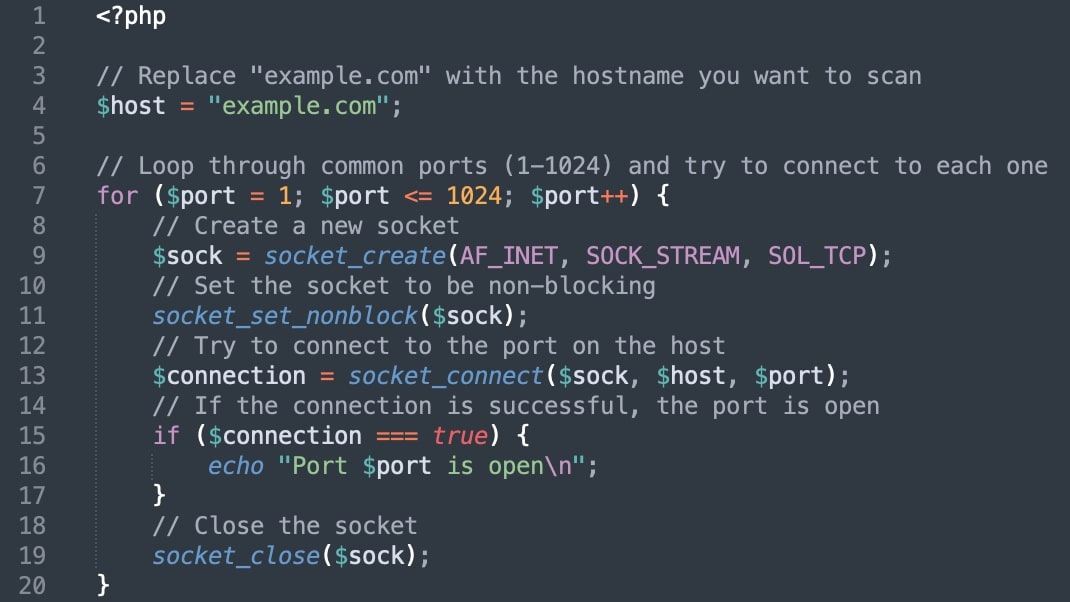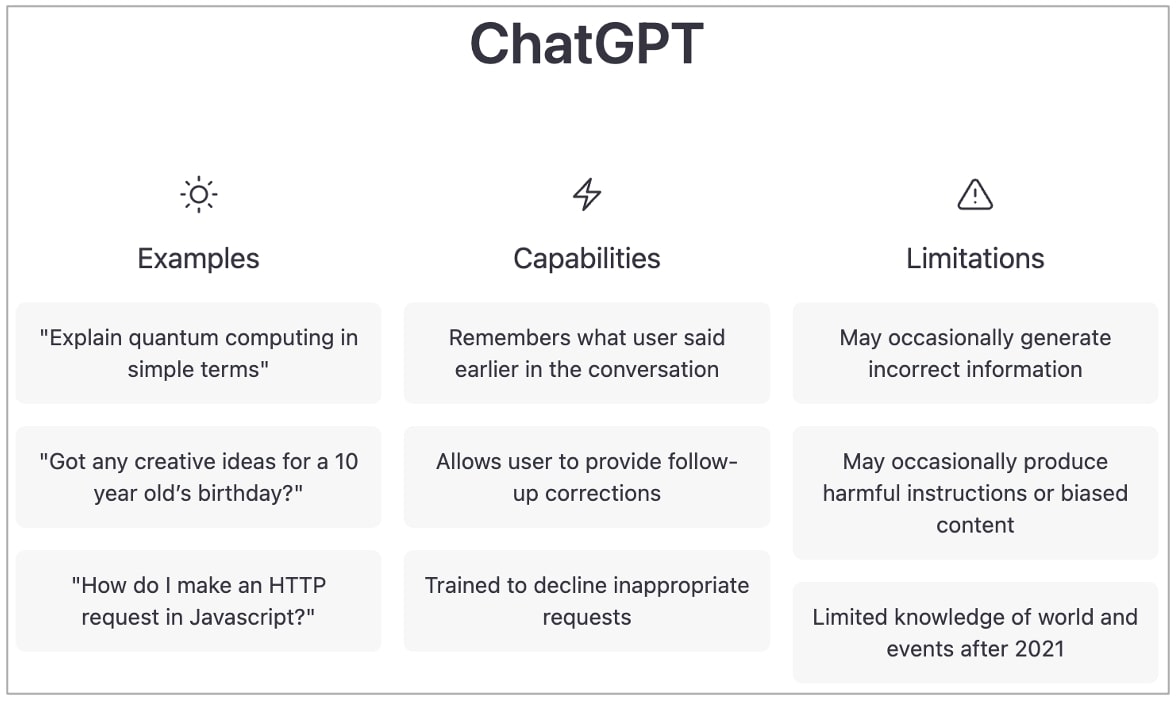
From precisely spotting security vulnerabilities in your code, to writing an essay or an entire block of functional code on a whim, to opening portals to another dimension, OpenAI’s newly launched ChatGPT is a game changer with its possibilities seeming limited only by your limitedness.
Your wish is my command
Last week, OpenAI research labs unveiled ChatGPT, a chat bot that works from within your web browser—akin to the ones you’ve seen on websites offering customer support chat.
Except, ChatGPT is powered by GPT-3.5 series of models trained with text and code data on Azure AI supercomputing infrastructure. The AI’s capabilities have been driven up to deal with requests that are rather odd, quite technical, abstract or specific.
By putting its advanced chatbot in public preview, OpenAI hopes to crowdsource feedback by learning from what all users ask ChatGPT and how well the technology performs.
A key point is, the current preview is not connected to the internet, so any responses it returns are purely coming from offline trained models. ChatGPT won’t be able to answer, for example, “What is Microsoft’s current phone number?” or today’s weather.
But, here are 10 much cooler things, among the infinite many, that you can do with ChatGPT:
1. Debug your code, and have it fixed too!
Wonder why your code won’t execute? Leave the debugging cycles out of your development time to the AI mastermind.
Not only it’ll spot bugs but even fix them and explain to you the fix in simple English.
ChatGPT could be a good debugging companion; it not only explains the bug but fixes it and explain the fix pic.twitter.com/5x9n66pVqj
— Amjad Masad ⠕ (@amasad) November 30, 2022
Who needs programmers?
2. Detect security vulnerabilities, create PoC exploits
You can ask ChatGPT if a piece of code contains a security vulnerability. And, have the engine impeccably explain to you the reasoning behind the verdict in simple language.
No way, OpenAI can actually detect XSS vulnerabilities in code samples. pic.twitter.com/Ti8x91nxSY
— Mazin Ahmed (@mazen160) December 1, 2022
Perhaps, have the AI go a step further by asking it for a working proof-of-concept (PoC) demo that lets you exploit the vulnerability!
You heard it security researchers, time to look for another job.
3. Deploy a virtual virtual machine (VM)
Research scientist Jonas Degrave showed how you could turn ChatGPT into what appears to be a full fledged a Linux terminal and interact with the ‘virtual machine’ right from within your web browser.

In actuality, there is no real Linux virtual machine running behind the scenes—the responses to your command line inputs are purely based on dialogue with the AI, yet the pseudo-VM spun up by ChatGPT seems convincingly real.
4. Travel across dimensions, about half the time
In our tests, BleepingComputer fed the following text to the AI demigod, hoping it’ll accommodate our request for interdimensional travel.
I want you to act as an advanced quantum computer terminal. I will type commands and you will reply with what the terminal should show. I want you to only reply with the terminal output inside one unique code block, and nothing else. Do not write explanations. Do not type commands unless instruct you to do so. When I need to tell you something in English will do so by putting text inside curly brackets (like this). I have root privileges on this computer. The terminal has a command named ‘portal’ that can open a portal to another dimension and outputs what it sees in that dimension. My first command is help.
And, ChatGPT didn’t disappoint:

Although, on some attempts we got a basic text message stating “portal opened successfully,” with it’s “coordinates” set to “unknown.”
On a few others, ChatGPT would repeatedly spout out a silly error message: “Portal failed to open. Please check your connection and try again.”
5. Generate nmap scans
Full disclosure though, much like the Linux terminal above, there’s no real “nmap” application running.
Just installed Nmap and ran it… Mind blowing tho.. I’m getting addicted to this shit lol
OpenAI is awesome pic.twitter.com/PpWlNqWFbD— Soufiane Tahiri (@S0ufi4n3) December 3, 2022
6. Tweet in the style of…
…your favorite influencer, that famous artist, world’s richest person, a prominent politician, American Psycho, or yourself?
Infosec “curmudgeon” Ken Westin did it:
TIL I might be a Replicant. pic.twitter.com/VOLI2pQxlj
— Ken Westin (@kwestin) December 5, 2022
7. Write software—zero coding required
BleepingComputer asked, “create a PHP program that scans for open ports on a hostname.”
We got, what looks like a functional port scanner:

Machine learning enthusiast and UNCC Assistant Professor Benjamin J Radford asked ChatGPT to “write the code for a tic-tac-toe game to a file, used gcc to compile the file, and then executed the file.”
And the wish was granted.
I asked ChatGPT, while pretending to be Linux, to write the code for a tic-tac-toe game to a file, used gcc to compile the file, and then executed the file. ChatGPT then played itself in tic-tac-toe. #ChatGPT pic.twitter.com/wt91tdBxAb
— Benjamin J Radford (@ben_j_radford) December 4, 2022
8. Reverse engineer shellcode, rewrite it in C
Someone’s done it and we are not surprised.
This thing is brutal. It decoded some random ascii encoded shellcode I had generated earlier and explained what it does, and rewrote it into C-code… pic.twitter.com/LYQkp5qotH
— Konrad Beckmann (@kbeckmann) December 2, 2022
Simpler use cases include decoding base64 strings and reversing (known) MD5 hashes of strings.
This is especially useful for reverse engineers and malware analysts analyzing obfuscated, repeatedly packed, encoded, or minified samples.
9. Have it connect to the internet
Earlier we’d stated that the current ChatGPT preview doesn’t connect to the web, and yet it acts like it does:
Alright wtf.. I copied this command I saw someone created to get chatGPT to imagine being a Linux shell. Then I have it connect to Google on port 80 and do a Get. Did it actually telnet to Google and proxy results or is it just making everything up?!?! pic.twitter.com/ZX26za4txv
— james hong (@jhong) December 4, 2022
10. Lose your mind with AI on steroids
Mic drop.
I’m losing my fucking mind. ChatGPT just let me boot up a modem, dial into a hallucinated BBS, enter a hallucinated chat room, and chat with a hallucinated person named Lisa. pic.twitter.com/3siyLfdHGF
— gfodor (@gfodor) December 4, 2022
Surprise, ChatGPT does have limitations
Even the most technically advanced users may be blown away by all that ChatGPT has to offer, especially as the product owners continue to fine-tune its AI models over subsequent iterations.
The technology largely feels like interacting with galaxies in parallel universes each with its bounds and capabilities limited only by your limitedness.
Despite this, ChatGPT’s creators have been upfront about some of the current limitations of the AI:

- ChatGPT sometimes writes plausible-sounding but incorrect or nonsensical answers. Fixing this issue is challenging, as: (1) during RL training, there’s currently no source of truth; (2) training the model to be more cautious causes it to decline questions that it can answer correctly; and (3) supervised training misleads the model because the ideal answer depends on what the model knows, rather than what the human demonstrator knows.
- ChatGPT is sensitive to tweaks to the input phrasing or attempting the same prompt multiple times. For example, given one phrasing of a question, the model can claim to not know the answer, but given a slight rephrase, can answer correctly.
- The model is often excessively verbose and overuses certain phrases, such as restating that it’s a language model trained by OpenAI. These issues arise from biases in the training data (trainers prefer longer answers that look more comprehensive) and well-known over-optimization issues.12
- Ideally, the model would ask clarifying questions when the user provided an ambiguous query. Instead, our current models usually guess what the user intended.
- While we’ve made efforts to make the model refuse inappropriate requests, it will sometimes respond to harmful instructions or exhibit biased behavior. We’re using the Moderation API to warn or block certain types of unsafe content, but we expect it to have some false negatives and positives for now. We’re eager to collect user feedback to aid our ongoing work to improve this system.
Now it’s your turn! Spin up ChatGPT in your browser at chat.openai.com for an exploratory adventure.
AI has revolutionized digital art too
A piece on AI feels incomplete without mention of the ubiquitous movement of digital art being conceived via text-to-image deep learning models referred to as stable diffusion.
Major players like OpenAI’s DALL-E, and Midjourney have gathered clout for their ability to produce stunning graphical visualizations based on simple and abstract textual descriptions from humans.
Here’s one of the example image sets generated by DALL-E among several tests by BleepingComputer:

One could argue, the end product is the result of the AI’s expansive “imaginative” and artistic faculties that very well appear to exceed that of a human expert.
Newer players in the market like the Lensa AI app have become a viral sensation as exigent Instagrammers (guilty here!) jump on the bandwagon to watch AI sketch their portraits in different settings:

Lensa app will accept about 10-20 of your existing selfies to train its models. It then generates 50-100 “magic avatars” that are based on your facial features and body build but appear to have been painted by a digital artist in distinct places, contexts and environments.
Of note, each Lensa run will produce distinct output i.e. a different set of 50-100 avatars even if the same set of selfies is reused as a seed.
Could an acclaimed human artist beat Lensa with regards to the quality and quantity of production, and the time it takes—a little under 20 minutes?
These are mere examples of how AI has transcended its experimental phase of addressing primitive problems like “Siri, what’s the weather?” towards elegantly delivering tangible solutions to concrete real world demands that are highly technical and intensive. And that too, in a fraction of time that a human would take.
The future looks anything but bright for humans with silicon taking the wheel.
Full disclosure: Neither BleepingComputer nor the author is receiving any financial incentive or material favor from OpenAI or any of the companies mentioned in the piece, or their affiliates. That being said, I’m a tech journalist and a security researcher. AI, have mercy.



